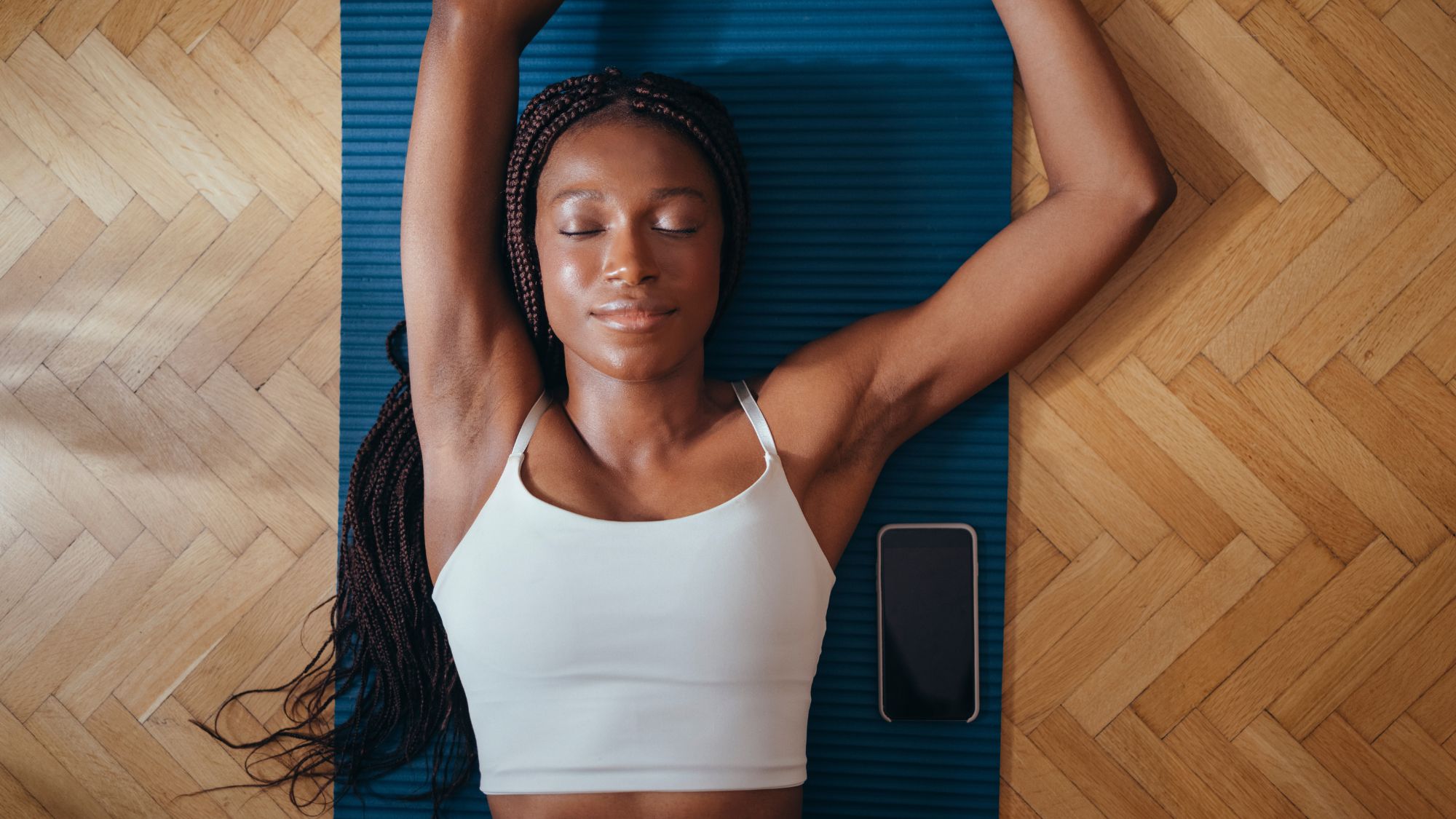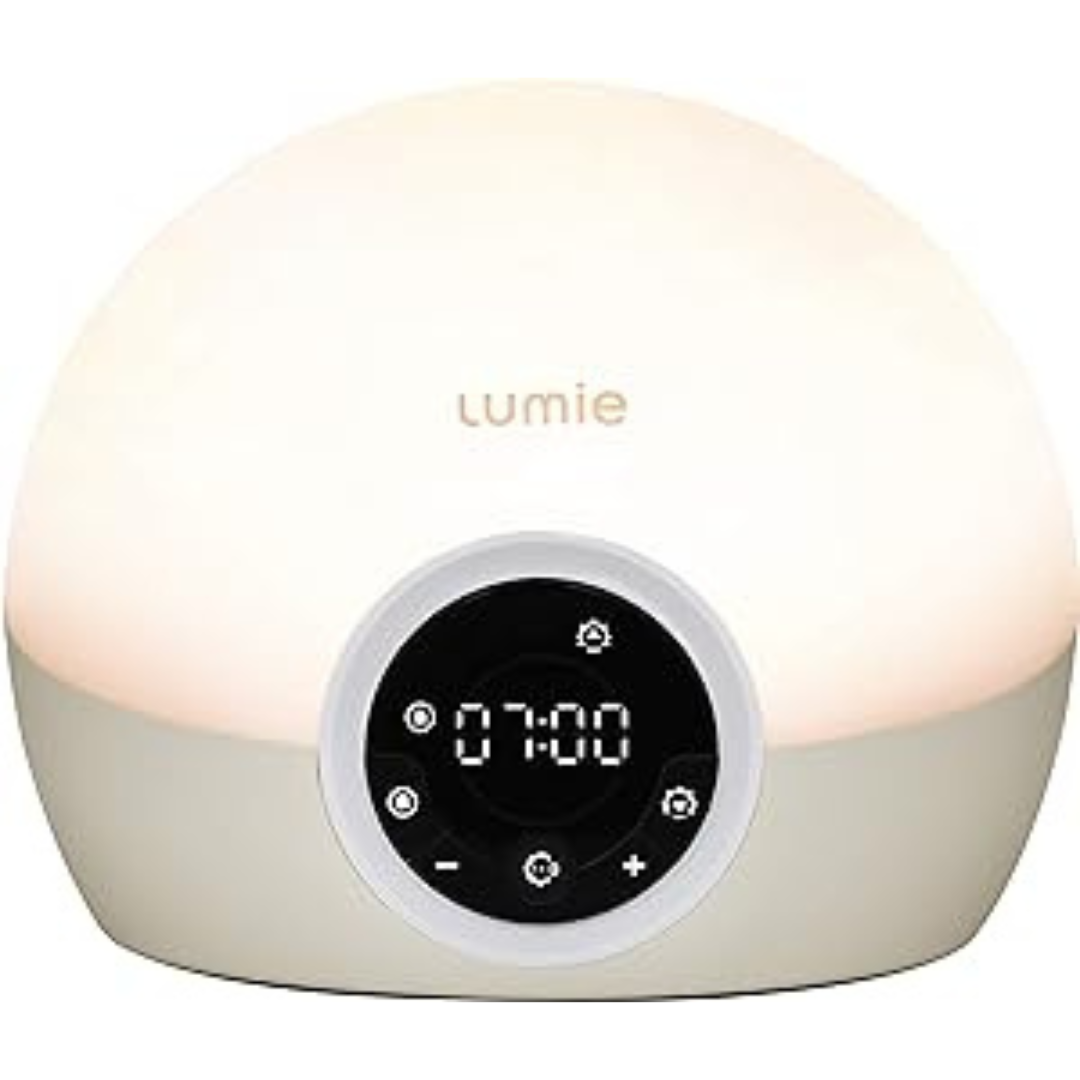Listen Up, Lazy Girls: Wellness Stacking Is All The Rage RN – But Is It The Ultimate Self-Care Hack?
Wellness that works smarter, not harder.


If it feels like we’re collectively graduating in wellness these days, you’re not imagining it. The UK’s wellness economy has ballooned to a £224 billion industry, TikTok is saturated with morning routines longer than most short films, and every other Sunday seems to bring a new ritual we’re told is essential for longevity. In short: we’re a society hooked on wellbeing - or, at least, the performance of it. Enter 'wellness stacking,' the latest trend promising to streamline it all.
The idea isn’t entirely new. Behavioural scientists have long explored habit pairing and the brain’s ability to automate behaviours through association. But TikTok - specifically creator Bridgette Muller - has rebranded the concept into the kind of aesthetic ritual lazy-girl culture loves: take something you’re already doing, layer another feel-good action on top, and voilà, instant “wellness routine.” Think journalling under a red-light panel, stretching after a steamy shower while listening to affirmations, or walking while listening to an audiobook.
The question is: is this a genuinely smart, science-backed way to create sustainable wellbeing habits, or just overconsumption disguised as self-care? Experts say it can be both.
Aesthetics doctor Dr Barbara Kubicka explains that pairing sensory or movement-based practices taps directly into neuroplasticity - the brain’s ability to adapt, rewire and solidify patterns. “The brain thrives on repetition and association,” she says. When intentional, these combinations “strengthen neural circuits involved in focus, reward, and emotional regulation,” lowering cortisol and improving resilience over time.
Functional medicine practitioner Lelani Loubser agrees, adding that certain combinations - exercise + sunlight, breathwork + cold exposure - have measurable effects on circadian rhythm, serotonin production, vagal tone and autonomic balance. As she puts it, “habit ‘stacking’ can amplify physiological and psychological benefits.”
But the trend has a shadow side. As Dr Kubicka cautions, “There is a growing tendency to overconsume wellness by layering multiple treatments and rituals without considering their cumulative effect on the nervous system.” In other words: stacking may be smart, but stacking everything isn’t.
So is wellness stacking a clever behavioural hack for a calmer, more consistent life, or simply overconsumption disguised as self-care? Let’s unpack it.
Celebrity news, beauty, fashion advice, and fascinating features, delivered straight to your inbox!
Before you read on, you might want to check out our guide to habit stacking, or discover the best wellness planners, plus our how-to on goal setting. Interested in trying wellness stacking for yourself? Read what happened when MC UK contributor Georgia Brown tried Kindle walking.
Looking to level up your wellness game? Experts say wellness stacking could be the key to better health
What is wellness stacking?
Wellness stacking is the practice of pairing two or more wellbeing habits so they occur together, forming a predictable, repeatable micro-routine. You take an established habit - say, your morning coffee - and attach a new, wellness-boosting action to it, such as five minutes of stretching, breathwork, or light exposure by stepping outside.
According to Dr Suzanne Hackenmiller, wellness expert and Chief Medical Advisor at AllTrails, the power lies in the cues: “If you piggyback one habit onto another, you reduce the mental effort needed to form new behaviours.” Sensory habits (touch, sight, sound, movement) anchor the routine in both body and mind, making it far more likely to stick.
Science shows that our brains love predictable rewards. Each time we repeat a healthy habit, dopamine reinforces the behaviour, helping it become automatic. By stacking one wellness habit onto another, you create a ‘dopamine loop’ that makes focus, calm, and emotional balance feel almost effortless.”
Who is wellness stacking good for?
Almost everyone, provided the intention is clear and the combinations are realistic.
Dr Kubicka notes that stacking can support people who struggle with consistency or feel overwhelmed by long, complex routines. The pairing effect strengthens neural circuits involved in reward and regulation, making it an efficient way to build habits without needing extra time or willpower.
Loubser views stacking as especially beneficial for anyone looking to regulate stress, improve energy and stabilise the nervous system. Her “core stack” - morning light + movement, protein-rich meals, midday breathwork, strength training balanced with recovery, and low-light evening wind-downs - works because it supports multiple biological systems simultaneously.
Osteopath Manjot Kaur Dehala emphasises that stacking also benefits those who respond well to sensory anchors and ritual. From a neuro-osteopathic perspective, layering gentle movement, breathwork and stillness “reinforces the body’s memory of safety and pleasure,” priming the nervous system for calm even before the ritual begins.
If you’re a routine-averse person who hates rigid schedules, stacking offers flexibility. If you’re a routine obsessive, it helps refine rather than expand your checklist. And if you fall somewhere in between? It simply makes good habits easier.
Are there any risks to wellness stacking?
Yes, mainly when the practice becomes excessive, perfectionistic or misaligned with personal needs.
Dr Kubicka warns that the biggest red flag is stacking without intention: “When wellness stacking becomes a ‘box-ticking exercise,’ we risk overstimulating the nervous system or creating unnecessary pressure.” In those cases, the very habits designed to regulate stress end up increasing it.
Loubser highlights combinations that may backfire biologically, such as high-intensity exercise paired with chronic sleep deprivation, or fasting combined with heavy caffeine intake. Both can spike cortisol and disrupt hormonal balance.
Dr Hackenmiller stresses that comparison culture is a major risk factor. “If routines are overly complex or not personalised, they may leave us feeling as though we’re never doing enough.” Perfection-oriented stacking = the kind driven by social feeds - quickly spirals into self-optimisation rather than self-care.
The solution? Build stacks that support your real life, not the hyper-curated version you see online. True self-care, as all experts agree, allows for rest, imperfection and days off.
How to wellness stack and better your life, according to the experts
Start with a habit you already do - your morning coffee, commute or evening shower - and attach one simple, sensory-based behaviour, such as stretching, breathwork or stepping outside for light.
Choose intentional combinations that work synergistically (exercise + sunlight, breathwork + cold exposure, protein + fibre + healthy fats, or sleep hygiene + a screen curfew). Stay aware of overstimulation; if a routine feels pressurised, Dr Kubicka advises scaling it back.
Prioritise quality over quantity with small daily anchors like morning light, a quick midday breath reset or journaling after skincare. Leave space for intuition, as Dehala notes, alternating layering with pulling back. And shape stacks around your environment - Dr Hackenmiller highlights that pairing habits with time in nature can amplify their calming and regulatory effects.
Shop MC-approved wellness products to start your stack

If I were going to start anywhere with wellness stacking, I'd start by planning my productivity. I have consistently planned my days, weeks and months for years now, and whenever I slip off the productivity train and stop doing it, I notice a shift in my motivation, output and overall ability to stay on track.
Taking just ten minutes each morning to map out my day whilst getting some morning sunlight is my favourite morning wellness stack, and this beautiful, croc-bound planner from female-founded brand Scéne makes the allure of jotting down my thoughts even more tempting. It features yearly and monthly goal-setting frameworks, as well as daily planning pages, Sunday resets and monthly calendars to get you started.

Getting morning light is challenging in the dark months. This new SAD lamp from Lumie is the perfect way to perk up gloomy winter mornings. The Marie Claire UK team has tested it personally and can confirm it's easy to use, stylish in any room, and effective at helping you stave off winter blues.

With over 2 million Instagram followers, Emily English is a culinary force. Her latest cookbook, Live To Eat, has already become a firm favourite at Team MC UK. Perfect for anyone wanting to add delicious, nutrient-dense meals to their daily routine - because good food, like wellness habits, works best when it’s intentional and effortless.
Is wellness stacking just multitasking?
No. Multitasking splits attention and often increases stress, while wellness stacking links behaviours into a single, cohesive cue-driven routine. The goal isn’t efficiency - it’s consistency. As Dr Kubicka puts it, “True wellness is not about quantity, but quality and intention.” Done well, stacking fosters calm, stability and long-term behavioural change. Done poorly, it becomes another thing to optimise.

Georgia Brown is a freelance journalist covering fashion, lifestyle, heath and fitness. With bylines in Harper’s Bazaar, Women’s Health, and HELLO! where she formerly held the position of Senior Lifestyle & Fashion Writer, she’s also the co-founder of run club Sunnie Runners and is a devoted marathoner. With a particular love for sustainable fashion and slow living, Georgia can often be found sifting through London's best vintage stores to find the best pre-loved pieces.